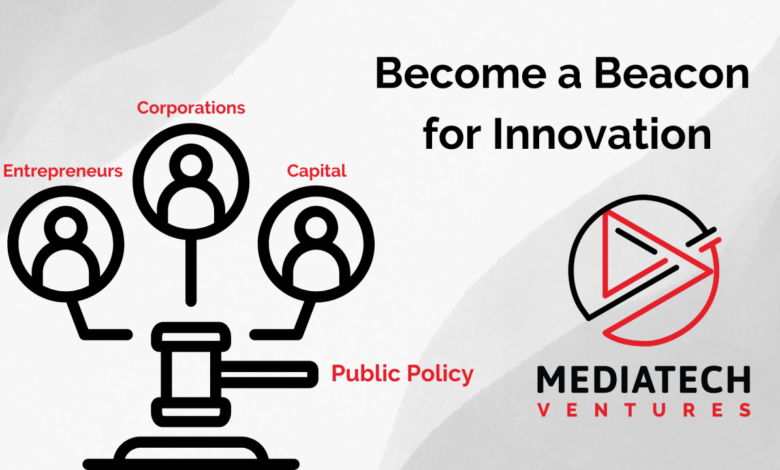Fostering Innovation and Investment
The Role of Public Policy in Regional Development

Innovation and investment are critical drivers of economic growth and prosperity for regions around the world. However, realizing their full potential requires a conducive environment shaped by effective public policy. From providing incentives for research and development to fostering entrepreneurial ecosystems, policymakers play a pivotal role in nurturing innovation and attracting investments. Below I explore various strategies through which public policy can support and catalyze innovation and investments in a region.
1. Creating a Supportive Regulatory Framework:
One of the primary functions of public policy in promoting innovation and investment is to establish a conducive regulatory environment. Clear and transparent regulations help reduce uncertainty for businesses and investors, encouraging them to take risks and explore new opportunities. Streamlining bureaucratic processes, simplifying licensing procedures, and ensuring intellectual property protection are essential aspects of a supportive regulatory framework. A few examples of this are,
- Establishing clear and transparent regulations reduces uncertainty for businesses and investors, facilitating decision-making processes.
- Simplifying bureaucratic procedures and streamlining licensing requirements can lower barriers to entry for innovative startups and small businesses.
- Ensuring robust intellectual property protection encourages investment in research and development, as companies feel confident that their innovations will be safeguarded.
2. Investing in Education and Research:
Education and research institutions are the backbone of innovation ecosystems. Public policy can support innovation by investing in STEAM (Science, Technology, Engineering, Arts, and Mathematics) education, vocational training programs, and research infrastructure. Collaborations between universities, research centers, and industries can facilitate knowledge transfer and technology commercialization, driving innovation-led growth in the region. A few examples of this are,
- Funding STEAM education programs and vocational training ensures a skilled workforce capable of driving innovation across various sectors.
- Investing in research infrastructure, such as laboratories and research centers, provides a foundation for groundbreaking discoveries and technological advancements.
- Promoting collaboration between academia and industry encourages the transfer of knowledge and the commercialization of research findings, spurring economic growth.
3. Providing Financial Incentives:
Financial incentives such as tax credits, grants, and subsidies can significantly stimulate innovation and investment activities. Public-private partnerships can be leveraged to co-fund research and development projects, startup incubators, and venture capital initiatives. Targeted incentives for specific industries or technologies can align with regional strengths and strategic priorities, fostering sustainable growth and competitiveness. A few examples of this are,
- Tax credits for research and development expenditures incentivize companies to invest in innovation.
- Grants and subsidies for startups and small businesses help mitigate the risks associated with early-stage ventures, encouraging entrepreneurial activity.
- Public-private partnerships can leverage government funding to attract additional private investment, maximizing the impact of financial incentives.
4. Supporting Entrepreneurship and Startups:
Entrepreneurship is a key driver of innovation and job creation. Public policy can encourage entrepreneurship by offering mentorship programs, access to seed capital, and incubation facilities. Creating a vibrant startup ecosystem requires fostering a culture of risk-taking, celebrating failure as a learning opportunity, and promoting networking events and forums where entrepreneurs can connect with investors and mentors. A few examples of this are,
- Mentorship programs connect aspiring entrepreneurs with experienced mentors who can provide guidance and support.
- Access to seed capital through government grants or venture capital funds enables startups to develop their ideas and bring them to market.
- Incubation facilities offer resources such as office space, equipment, and networking opportunities, fostering the growth of innovative startups.
5. Infrastructure Development:
Investments in physical infrastructure such as transportation, communication networks, and utilities are essential for enabling innovation and attracting investments. Well-connected regions with modern infrastructure are more attractive to businesses seeking to establish operations or expand their footprint. Public-private partnerships can be instrumental in financing and developing infrastructure projects that support innovation clusters and industrial zones. A few examples of this are,
- Investing in transportation infrastructure, such as roads, railways, and airports, improves connectivity and facilitates the movement of goods and people.
- Developing communication networks, including broadband internet access, enhances access to information and promotes collaboration.
- Ensuring reliable utilities, such as electricity and water, is essential for supporting industrial activities and attracting investment.
6. Promoting Collaboration and Clusters:
Collaboration among businesses, research institutions, and government agencies is crucial for driving innovation and competitiveness. Public policy can encourage the formation of innovation clusters or industry consortia focused on specific sectors or technologies. These clusters facilitate knowledge sharing, resource pooling, and collaborative R&D efforts, leading to the emergence of specialized hubs of excellence within the region. A few examples of this are,
- Encouraging collaboration among businesses, research institutions, and government agencies fosters knowledge sharing and accelerates innovation.
- Supporting the formation of innovation clusters or industry consortia facilitates synergies among related businesses and promotes specialization.
- Creating networking events and forums where stakeholders can exchange ideas and forge partnerships strengthens the innovation ecosystem.
7. Encouraging Sustainable Practices:
Innovation and investment should be aligned with sustainable development goals to ensure long-term prosperity and environmental stewardship. Public policy can incentivize businesses to adopt sustainable practices through regulations, tax incentives, and certification programs. Supporting clean technologies, renewable energy projects, and circular economy initiatives can position the region as a leader in sustainable innovation and attract socially responsible investments. A few examples of this are,
- Implementing regulations that promote sustainability, such as emissions standards and waste management requirements, incentivizes businesses to adopt environmentally friendly practices.
- Offering tax incentives for investments in clean technologies and renewable energy sources encourages the transition to a low-carbon economy.
- Supporting initiatives that promote resource efficiency, such as recycling and circular economy strategies, reduces environmental impact while creating economic opportunities.
In conclusion, public policy plays a crucial role in fostering innovation and investments in a region. By creating a supportive regulatory framework, investing in education and research, providing financial incentives, supporting entrepreneurship, developing infrastructure, promoting collaboration, and encouraging sustainable practices, policymakers can cultivate a thriving ecosystem where innovation flourishes, businesses thrive, and communities prosper. Effective public policy interventions tailored to the unique strengths and challenges of the region can unlock its full potential and drive inclusive and sustainable growth, while attracting corporations and capital to the region.
Resources For Policy Makers and Startups
- Pivot – Searchable database of federal and private funding opportunities in all fields. Pivot can be utilized to save searches and track funding opportunities; discover collaborators; get tailored funding recommendations and alerts; and gain insights from previously awarded grants.
- Grants.Gov – Searchable database of all grant opportunities offered by Federal Agencies
- ScientifyRESEARCH – At scientifyRESEARCH, our mission is to help researchers get research funding and our vision is for a world where the best research and the most promising researchers are funded.
- Data Innovation Fund – The Data Innovation Fund aims to leverage the acquisition, storage, processing, analysis, and visualization of data to help operationalize UNHCR’s protection mandate through the use of emerging technologies, including information and communication technologies.
- SBIR.GOV – The Small Business Innovation Research (SBIR) and Small Business Technology Transfer (STTR) programs are highly competitive programs that encourage domestic small businesses to engage in Federal Research/Research and Development (R/R&D) with the potential for commercialization.
- EDA – The U.S. Economic Development Administration’s investment policy is designed to establish a foundation for sustainable job growth and the building of durable regional economies throughout the United States. This foundation builds upon two key economic drivers – innovation and regional collaboration.
- Grant Watch – One of the largest grant databases in the world with over 25k grants






